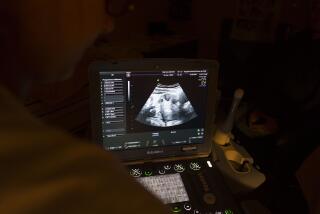Your genetic rundown on a chip
- Share via
The last two years have seen an exponential increase in the rate of gene discovery, thanks in large part to the advancements in so-called genotyping chip technology. These small glass or silicon platforms have made quick and easy work of simultaneously analyzing hundreds of thousands of genetic variations that exist in the human genome.
The screens detect single-letter changes in the DNA code known as single nucleotide polymorphisms, or SNPs (pronounced “snips”). SNPs act as signposts along the genome. They allow researchers to determine what version of a gene a person has, as well as which genes are linked to various diseases.
The use of SNP chips has been especially useful in the search for the genetic underpinnings of complex diseases such as heart disease, Type 1 and Type 2 diabetes, obesity, rheumatoid arthritis, macular degeneration and cancer. Unlike more classic hereditary conditions -- such as Huntington’s disease or cystic fibrosis -- that stem from mutations in a single gene with a dramatic effect, these complex and common diseases are often influenced by many genes, each with just a modest effect.
Today, genome-wide association studies using SNP chip technology are turning up disease markers at a record pace. Already in 2008, major studies have uncovered or confirmed SNPs for prostate cancer, breast cancer, cardiovascular disease, lung cancer, deep vein thrombosis, obesity and schizophrenia, to name a few. It’s a veritable torrent of information.
The bulk of the scientific work going on at the companies offering whole-genome scans is reviewing the new studies and determining which genetic markers are legitimate ones. “We have about six PhD-level human geneticists and epidemiologists who actually read every single [research] paper and decide whether the association is real,” says Dietrich Stephan, co-founder of Navigenics and director of the neurogenomics division at the Translational Genomics Research Institute in Phoenix. “Once it passes muster, then we will capture it on our genotyping platform. We’ve started with a handful of diseases where we think the risk factors are real and robust.”
-- Anna Gosline





